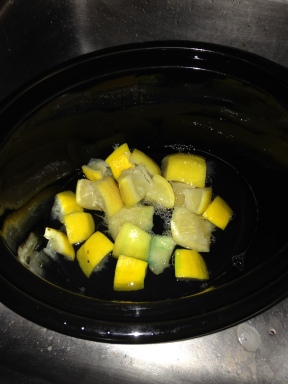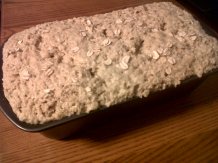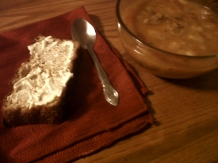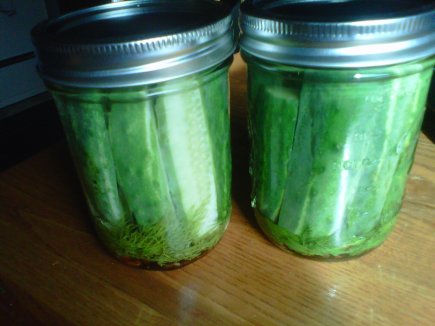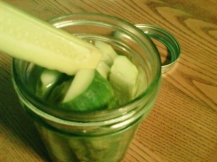 I’m jumping back on the healthy eating bandwagon. One of my co-workers last week suggested we all do a sort of Biggest Loser competition/joint venture. We finally settled on individually keeping track of our fitness (at least 20 minutes of daily activity), our eating (by tracking calories), and our personal goal (measured by weight or inches) for the next 12 weeks. The contest starts tomorrow, and I’m working this weekend to find recipes and easy meal ideas so I can stay on track.
I’m jumping back on the healthy eating bandwagon. One of my co-workers last week suggested we all do a sort of Biggest Loser competition/joint venture. We finally settled on individually keeping track of our fitness (at least 20 minutes of daily activity), our eating (by tracking calories), and our personal goal (measured by weight or inches) for the next 12 weeks. The contest starts tomorrow, and I’m working this weekend to find recipes and easy meal ideas so I can stay on track.
This particular recipe contains lemon curd, far from the healthiest of foods, but it actually comes with a lower calorie count than some of its counterparts (Orange Cranberry Oatmeal and Spiced Apple Oatmeal…recipes coming soon) despite the added sugar and fat. The key here is portions.
I made Microwave Lemon Curd (recipe at the bottom) because I still haven’t gotten around to buying myself a double boiler and the recipe doesn’t require separating the eggs, which means less work and less waste; somehow I never get around to actually using the leftover egg whites.
Ingredients
1 1/4-1 1/2 C water
1/4 C steel cut oats**
2 Tbsp prepared lemon curd
1/4 C fresh or frozen blueberries (thawed)
1 tsp lemon zest, optional
Heat water in small saucepan to boiling, add oatmeal and stir. Reduce heat to low and simmer uncovered for 20 minutes or until most of the water has been absorbed. Remove from heat and allow to stand for 2 to 3 minutes. Oatmeal will continue to thicken as it cools.
Combine oatmeal with lemon curd and blueberries. Top with lemon zest, and serve warm.
**I love steel cut oats, but if you don’t you can make it with any plain oatmeal. Substitute one serving of your favorite prepared oatmeal for the water and steel cut oats.

1/2 C butter, melted
1 C fresh lemon juice
3 large eggs
1 C granulated sugar
Zest of 1-3 lemons
Whisk together all ingredients in a large, microwave-safe bowl (7-8 cup size will prevent bubbling over). Microwave in 1 minute increments, stirring after each minute. Lemon curd is done when it coats the back of a spoon and mounds gently in the center of the bowl when stirring; this generally takes 4-10 minutes depending on the strength of your microwave.
Recipe makes approximately 2 cups. Lemon curd can be stored in the refrigerator for 3-4 weeks or frozen for up to a year. If thawing from frozen, allow lemon curd to sit in the refrigerator at 40 degrees for 24 hours prior to using. Thawed curd will keep in the refrigerator for up to 4 weeks.

